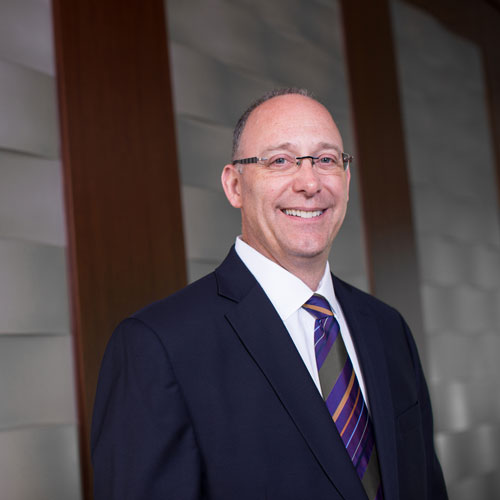A new vehicle is starting to take over in a city known for the cable car. By now, it’s a common sight. Every day, starting just after 5 a.m., luxury buses from high-tech companies in Silicon Valley crisscross San Francisco, load up thousands of employees, and cart them 40 miles away to corporate offices in cities such as Mountain View. Critics say the system discourages long-term residency, drains city resources, drives up rental prices, and hurts the local economy.
While continuing to expand in Silicon Valley, LinkedIn—the rapidly growing business-oriented social networking service—is also growing its presence within the heart of San Francisco. In April 2014, the company announced a deal to fully lease an office tower in the South of Market (or, SoMa) district. The building, scheduled for completion later this year, will include offices spanning 450,000 square feet that will accommodate more than 2,000 employees.

Armen Vartanian is LinkedIn’s head of global real estate and workplace strategy. He started in the growing tech company’s finance divisions but moved to the facilities team in 2010 to allow more time for his other passion: training for the 2012 Olympic Games. Vartanian, a marathon runner, had his medal aspirations dashed by an injury, but since he was already fully embedded in real estate deals for LinkedIn by that point, he turned the setback into a new career opportunity and started managing global real estate teams. Today, he’s responsible for all the company’s physical locations in 26 cities around the world.
When Vartanian took over, LinkedIn was growing fast. “Headcount was growing, and we needed to keep up with the demand for more space as the company continued to expand,” he says. Vartanian partnered with business and finance teams and created a strategic real estate management plan built on data. LinkedIn looks at more than simple details such as cost and location analysis—it also considers demographic data. “We want to know how many schools are nearby, where we’ll get our talent pool, how many of those people we can retain, and how we can grow,” Vartanian says. “We also look at time zones and how we can manage from different locations.”
LinkedIn’s offices were—like those of most other tech companies—outside of the city. But when Vartanian and his colleagues pored over the data in 2010, they started to notice something. “Companies bus employees because they don’t think they can afford space in San Francisco, but we decided to invest in creating a presence in San Francisco that will allow us to attract and retain employees as we grow here over the next 10 years,” Vartanian says. The company started looking for space and ultimately settled on a 26-story building being built by Tishman Speyer Properties LP at 222 Second Street.
LinkedIn will keep its corporate headquarters in Mountain View, but the new building will help define the company as it continues managing a period of explosive growth. When Vartanian joined LinkedIn in 2008, the young company had just 200 employees; today, it has more than 5,000. In 2013, its revenues increased 57 percent to $1.53 billion. “We’re growing fast, and we need the talent and the real estate to support that,” Vartanian says.

As it continues to take on more staff, LinkedIn will use its new Second Street building as a consolidation play, housing a diverse set of employees under one roof instead of asking them to work in multiple sites around the city. “We want the building to match our corporate culture, and we want to build an environment where great collaboration can happen,” Vartanian says. His teams aim for 200 square feet per person and develop large, open floor plans with flexible areas and soft meeting spaces.
Though he has yet to finalize the exact details, Vartanian says the new building will feature the full amenities that workers in the high-tech fields have come to expect from leading companies. And, because such a large percentage of the company’s workforce will call the new site home, accessibility was a major concern; the Tishman tower is just two blocks from a BART station and a short walk from a Caltrain railway station.
The property demonstrates the increasing importance of aligning real estate and business strategies. Since its 2011 IPO, LinkedIn has more than tripled in size. Now, with the company’s high-rise development well under way, Vartanian has turned his focus to getting domestic and international sites online to facilitate ongoing expansion.




